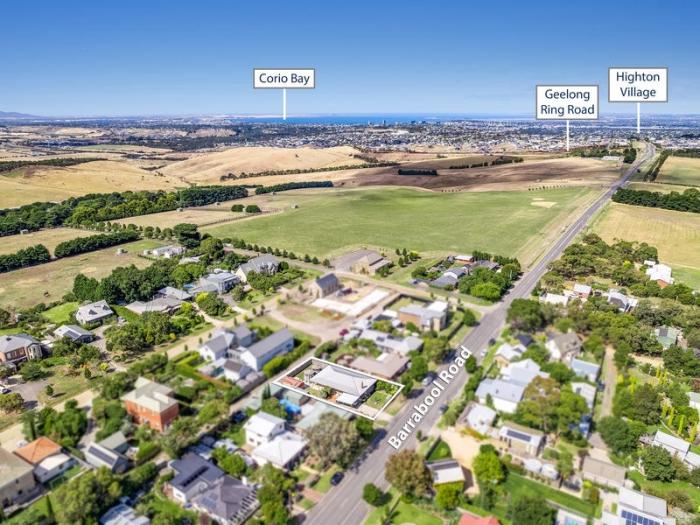Ceres 3221 |

Ceres is a small township with an extensive district. The township is 8 km. west-south-west of Geelong; and the districts perimeter includes Ceres Lookout, 3 km. east of the township, the Barrabool Hills to the north and the site of old Christian chapels 7 km. westwards. The chapels are sometimes described as being part of the Barrabool village.
The Parish of Barrabool was subdivided and sold without provision for a town. At the place where Ceres grew, at the foothills of the Barrabools, several vineyards were established during the 1840s, either side of the road to Colac. A land owner in the area subdivided and sold lots in a town of private design in 1850, advertised as the village of Ceres. The name derives from the Roman goddess of agriculture (associated with the districts early wheat growing) or, equally probable, from a town south of the Firth of Tay, Scotland.
There were already a denominational School (1847) and Anglican church in the Barrabool direction. The opening of the Wheat Sheaf Hotel (1850) and the Rising Sun Hotel (1853) at Ceres was the genesis of Ceres as a district centre. A blacksmiths forge was established by the owners of a nearby quarry, which became a source of the much-used building material, Barrabool sandstone. Several shops, a Wesleyan church, three hotels and a post office were opened by 1856. In 1861 a Temperance Hall was built and it and the Wesleyan church have outlasted two of the three hotels.
Hand-reaping of grain, orcharding and grape-picking were labour-intensive, which maintained a relatively high district population while those industries lasted. (The existence of Anglican, Scots, Bible Christian and Devon church congregations would otherwise not have occurred.) The decline of those agricultural activities during the 1870s caused a corresponding decline in Ceres. Some orchards continued, but pastoral pursuits increased.
Barrabool sandstone has bequeathed a number of fine buildings. The Wesleyan church and the Temperance Hall in the township and the Anglican church near Barrabool are on the Register of the National Estate. The Register also contains the very early Denominational school made of rubble sandstone (1847) and an Aboriginal quarry for Cambrian greenstone. "Neuchatel"(formerly a Suisse Vineyard) 1854, originating from pioneer vignerons who began in 1842, is on the Victorian Heritage Register.
The Geelong Region Historic Buildings and Objects Study identified another twelve buildings as worthy of note, including Stanbury barn, built in 1855 to hold grain from the districts early substantial wheat farms. The Stanbury property was a notable Corriedale stud farm until sold in 1993.
Ceres is sufficiently close to Geelong to function as a rural/residential place within convenient commuting distance.
Ceres census populations have been 173 (1861), 289 (1881), 194 (1921) and 186 (1961).
❊ Web Links ❊
➼ Ceres 3221
❊ Also See.. ❊
➼ Ceres Hall
➼ Ceres Homestead
Update Page










